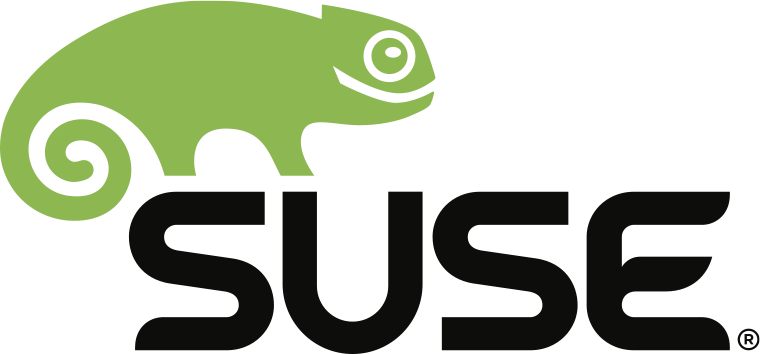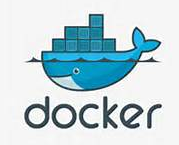Welcome Docker to SUSE Linux Enterprise Server【水平有限,中英對照,求糾錯】
阿新 • • 發佈:2019-02-15

Lightweight virtualization is a hot topic these days. Also called “operating system-level virtualization,” it allows you to run multiple applications or systems on one host without a hypervisor. The advantages are obvious: not having a hypervisor, the layer between the host hardware and the operating system and its applications, is eliminated, allowing a much more efficient use of resources. That, in turn, reduces the virtualization overhead while still allowing for separation and isolation of multiple tasks on one host. As a result, lightweight virtualization is very appealing in environments where resource use is critical, like server hosting or outsourcing business.
近日“輕量級虛擬化”成為了一個熱門話題。它也稱為“操作系層的虛擬化”,它允許您在一個主機上執行多個應用程式或系統管理程式。優點是顯而易見的:由於它沒有間隔在主機硬體和作業系統之間的hypervisor虛擬化管理層,以實現更有效的資源利用。由此帶來的效益是,減少了虛擬化開銷,同時仍然允許在一個伺服器中分離並隔離多個任務。因此,“輕量級虛擬化”在以資料使用為關鍵業務的環境中是非常吸引人的,比如伺服器託管或外包業務(如:雲端計算、大資料等)。
One specific example of operating system-level virtualization is Linux Containers, also sometimes called “LXC” for short. We already introduced Linux Containers to SUSE customers and users in February 2012 as a part of SUSE Linux Enterprise Server 11 SP2. Linux Containers employ techniques like Control Groups (cgroups) to perform resource isolation to control CPU, memory, network, block I/O and namespaces to isolate the process view of the operating system, including users, processes or file systems. That provides advantages similar to those of “regular” virtualization technologies – such as KVM or Xen –, but with much smaller I/O overhead, storage savings and the ability to apply dynamic parameter changes without the need to reboot the system. The Linux Containers infrastructure is supported in SUSE Linux Enterprise 11 and will remain supported in SUSE Linux Enterprise 12.
Linux Containers(Linux容器,有時也稱為“LXC”)是一個典型的作業系統層虛擬化例子。我們已經在2012年2月釋出的SUSE Linux Enterprise Server 11 SP2版本中為SUSE的客戶及使用者引入“LXC”容器。“LXC”容器採用類擬於Control Groups (cgroups)的技術進行資源隔離控制,包括:CPU、記憶體、網路、I/O和名稱空間,以此在作業系統中隔離各個過程的可視範圍,包括:使用者、程序或檔案系統。它提供的功能類似於“普通”的虛擬化技術——如KVM或Xen,其優勢在於可以實現更低的I/O開銷,節省更多儲存儲存空間並可實現在不重新啟動虛擬系統的情況下動態調整引數(譯者:這可以提高虛擬化效能並帶來更高的靈活性)。SUSE Linux Enterprise Linux 11版本直接支援“LXC”容器架構,對它的支援也將延續到SUSE Linux Enterprise 12版本中。
Now, we are taking a next step to further enhance our virtualization strategy and introduce you to Docker. Docker is built on top of Linux Containers with the aim of providing an easy way to deploy and manage applications. It packages the application including its dependencies in a container, which then runs like a virtual machine. Such packaging allows for application portability between various hosts, not only across one data center, but also to the cloud. And starting with SUSE Linux Enterprise Server 12 we plan to make Docker available to our customers so they can start using it to build and run their containers. This is the another step in enhancing the SUSE virtualization story, building on top of what we have already done with Linux Containers. Leveraging the SUSE ecosystem, Docker and Linux Containers are not only a great way to build, deploy and manage applications; the idea nicely plugs into tools like Open Build Service and Kiwi for easy and powerful image building or SUSE Studio, which offers a similar concept already for virtual machines. Docker easily supports rapid prototyping and a fast deployment process; thus when combined with Open Build Service, it’s a great tool for developers aiming to support various platforms with a unified tool chain. This is critical for the future because those platforms easily apply also to clouds, public, private and hybrid. Combining Linux Containers, Docker, SUSE’s development and deployment infrastructures and SUSE Cloud, our OpenStack-based cloud infrastructure offering, brings flexibility in application deployment to a completely new level.
現在,我們正踏上新的臺階以進一步加強虛擬化戰略,我們在此為您介紹新的 Docker 功能。Docker 建立在“LXC”容器的基礎上,目的是提供一種簡單的方法來部署和管理應用程式。它將應用程式進及其依賴關係打包到一個容器裡,然後執行虛擬機器。這樣的打包方法允許應用程式實現了在不同主機之間的可移植性,不僅在同一個資料中心可以遷移,在雲平臺中也可以進行遷移操作。在SUSE Linux Enterprise Server 12中我們計劃為客戶提供 Docker 功能,這樣客戶就可以開始使用它來構建和執行他們的容器。這是為提高SUSE虛擬化功能的新的舉措是新的歷史的一頁,它構建在我們已經支援的“LXC”容器之上。利用SUSE的生態系統,Docker 和 “LXC”容器將不僅僅只是一個用來構建、部署和管理應用程式的優秀的方式,我們的想法是通過巧妙地接入 Open Build Service (開放構建服務) 和 Kiwi 以實現方便和強大的圖型化部署,又或都是通過 SUSE Studio 實現此功能,以提供與類似於現有虛擬機器已經實現的批量部署概念。Docker 實現快速原型和快速部署過程十分簡單,因此當結合Open Build Service (開放構建服務)時,這樣一個優秀的工具結合,使得開發人員可以在一個統一的工具中支援各種版本的平臺。這對於未來而言是至關重要的,因為這些平臺很容易應用於公有云、私有云和混合雲。結合 “LXC”容器、Docker、SUSE的開發和部署架構以及SUSE Cloud (基於OpenStack的雲基礎架構),SUSE的應用程式部署靈活性將到達一個全新的水平。
Introducing Docker follows the SUSE philosophy by offering choice in the virtualization space, allowing for flexibility, performance and simplicity for Linux in data centers and the cloud.
引進 Docker 遵循SUSE哲學,為虛擬化架構提供更多選擇的空間,實現資料中心和雲端計算的靈活性、高效能和簡單管理。

